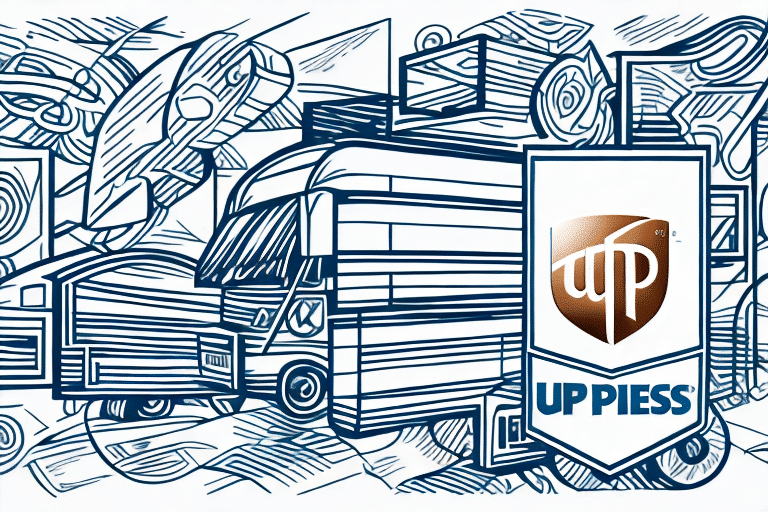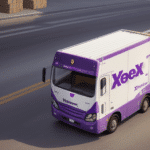How to Ship a Large Package with UPS: Packages with a Longest Side Exceeding 48 Inches
Shipping large packages can be a daunting task, especially when the package exceeds UPS's longest side measurement limit of 48 inches. However, with the right preparation and understanding of UPS shipping policies, you can successfully ship your oversized item with confidence. This guide provides comprehensive insights into shipping large packages with UPS, including understanding shipping policies, preparing your package, calculating costs, insurance options, tracking your shipment, and best practices for successful delivery.
Understanding UPS Shipping Policies for Large Packages
Before shipping your oversized package with UPS, it's crucial to familiarize yourself with their shipping policies for large packages. According to UPS guidelines, any package with a combined length and girth exceeding 165 inches or a longest side exceeding 108 inches is considered "large." Specifically, packages with a longest side exceeding 48 inches incur additional handling fees, which should be factored into your shipping costs.
Moreover, packages surpassing 108 inches in length and girth cannot be shipped via UPS Ground and must be shipped using UPS Freight. Ensuring compliance with these size restrictions helps avoid unexpected charges and shipping delays.
UPS also mandates specific packaging requirements for large packages. Utilizing double-walled boxes, pallets, or crates ensures that your package can withstand the rigors of transit. Proper labeling with the correct shipping address, return address, and tracking information is essential for seamless delivery.
For detailed and updated information on UPS shipping policies, it's recommended to consult the [official UPS website](https://www.ups.com/us/en/services/shipping-services.page) or contact UPS customer service for personalized assistance.
Preparing Your Large Package for Shipping with UPS
Choosing the Right Box or Crate
Selecting an appropriate box or crate is vital for the safe transportation of your oversized item. Opt for sturdy materials that can support the weight and dimensions of your package. Wooden crates are often recommended for added protection and durability, especially for fragile or high-value items.
Consider the mode of transportation when choosing your packaging. For air shipments, ensure that your package complies with UPS's size and weight restrictions. For ground shipments, select packaging that can withstand potential rough handling and vibrations.
Packing Materials for Cushioning and Protection
Proper cushioning is essential to prevent damage during transit. Use materials such as foam, bubble wrap, or packing peanuts to surround your item and fill any voids within the box or crate. This minimizes movement and absorbs shocks, safeguarding your package from impacts.
Additionally, reinforce the packaging with sturdy tape to secure all seams and edges. Clearly marking your package as "Fragile" can alert handlers to handle it with care, further reducing the risk of damage.
Labeling and Addressing Your Package Correctly
Accurate labeling ensures that your package reaches the intended destination without delays. Include the recipient's full name, address, and contact number, as well as your return address and contact information. Utilize a bold, easy-to-read font for the shipping label and affix it securely to the package.
Double-check all address details to prevent misdeliveries. For international shipments, ensure compliance with the destination country's customs requirements by including necessary documentation and following packaging guidelines.
Calculating Shipping Costs and Insurance Options
Using the UPS Shipping Calculator
Calculating the cost of shipping an oversized package with UPS involves considering dimensions, weight, destination, and additional services. Utilize the [UPS Shipping Calculator](https://www.ups.com/ship/guided/origin) to estimate your shipping costs accurately. Input the package dimensions, weight, and destination to receive a detailed quote, including any applicable surcharges for oversized items.
Remember to account for optional services such as signature confirmation or expedited delivery, which can impact the overall cost.
Insurance Coverage Options
Protecting your oversized shipment against loss or damage is essential. UPS offers various insurance options based on the declared value of your item:
- Declared Value Coverage: Provides coverage up to $5,000 per package, covering loss or damage during transit.
- Additional Insurance: For items valued above $5,000, additional coverage can be purchased to ensure adequate protection.
Carefully review the terms and conditions of your insurance policy to understand coverage limits and exclusions. For more information, visit the [UPS Insurance Services](https://www.ups.com/us/en/services/value-added-services/insurance.page).
Shipping Options and Delivery Timeframes
UPS Shipping Methods
UPS offers a range of shipping methods tailored to different needs:
- UPS Ground: Cost-effective for domestic shipments with a delivery timeframe of 1-5 business days.
- UPS 2nd Day Air: Ensures delivery within two business days, ideal for time-sensitive shipments.
- UPS Next Day Air: Guarantees next-business-day delivery, suitable for urgent packages.
- UPS Freight: Designed for shipping large and heavy items that exceed standard size and weight limits.
Consider factors such as delivery speed, cost, and package size when selecting the appropriate shipping method.
Tracking Your Shipment
UPS provides comprehensive tracking services to monitor your package's journey. Upon shipping, you'll receive a tracking number that can be used to:
- Track the real-time location of your package.
- Receive delivery status updates via the [UPS Tracking Tool](https://www.ups.com/track?loc=en_US&requester=ST/).
- Set up delivery notifications through email or SMS for convenient updates.
For enhanced tracking features, consider enrolling in UPS My Choice, which offers additional delivery flexibility and visibility.
Common Mistakes and Best Practices
Avoiding Common Errors
Shipping large packages with UPS involves navigating several potential pitfalls. Common mistakes to avoid include:
- Poor Packaging: Using inadequate packaging materials can result in damage during transit.
- Incorrect Labeling: Inaccurate or unclear labels can lead to misdeliveries or delays.
- Ignoring Size Restrictions: Failing to account for UPS's size and weight limits can incur unexpected fees.
- Overlooking Insurance: Not insuring valuable items leaves them unprotected against loss or damage.
By being mindful of these common issues, you can enhance the safety and reliability of your shipments.
Best Practices for Successful Delivery
Implementing best practices ensures a smooth shipping experience with UPS:
- Thorough Preparation: Carefully measure and weigh your package to ensure compliance with UPS policies.
- High-Quality Packaging: Use durable materials and proper cushioning to protect your item.
- Accurate Documentation: Provide clear and complete shipping information to facilitate timely delivery.
- Utilize UPS Tools: Leverage UPS's online resources, such as their shipping calculator and tracking tools, to manage your shipments effectively.
- Stay Informed: Keep abreast of any policy changes or updates from UPS to ensure ongoing compliance.
Adhering to these practices will help you achieve successful and efficient deliveries of your large packages with UPS.
Additional Resources
For more detailed information and updates on UPS shipping policies and services, visit the official [UPS Shipping Services](https://www.ups.com/us/en/services/shipping-services.page) page or contact [UPS Customer Service](https://www.ups.com/us/en/help-center/contact.page) for personalized assistance.






















